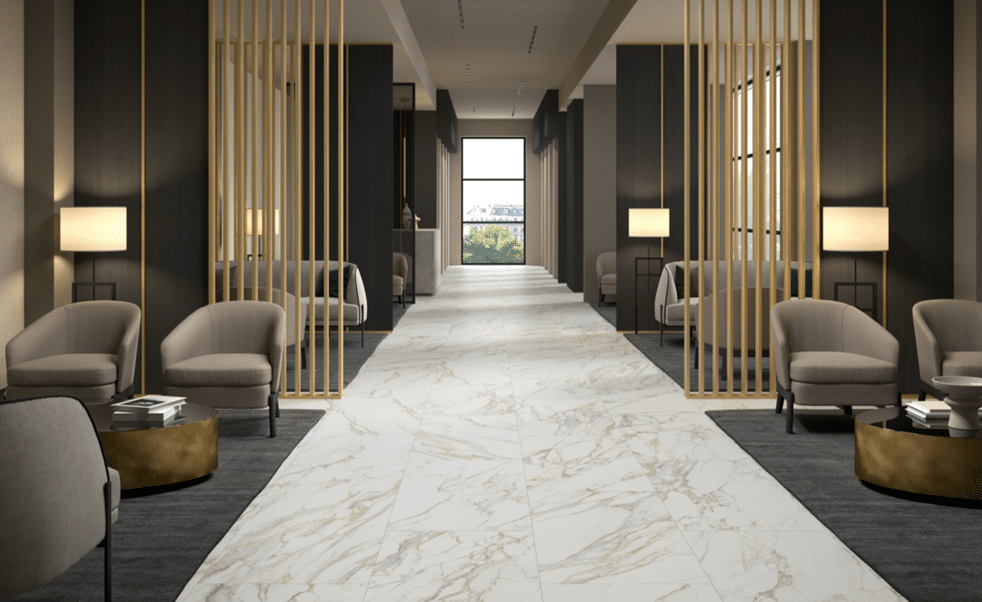
Choosing surface materials for hotels means prioritizing durability without sacrificing style.
Hotel surfaces need to stand up to wear and tear from constant foot traffic and luggage carts, plus the quick turnover of unpredictable guests. Additionally, creating a safe and hygienic environment is important to preserve the health of your guests, and a surface that’s easy for your staff to maintain is important for efficient operations (so you can devote more time to your guests).
The best hotels go even further, seeking to create that “home away from home” feeling that only the perfect mix of comfort, convenience, trust, and style can achieve.
Ceramic tile offers a seemingly limitless array of design options as well as surfaces tough enough to undergo constant comings and goings and constant cleaning.
When choosing a hotel tiles’ design, ceramic tile’s aesthetic appeal, cleanliness, and safety options are apparent — and guests will take note. After all, damaged or dirty flooring reflects poorly and ultimately affects the bottom line of your establishment.
Considerations When Choosing Hotel Surface Materials
Because hotels compete for a traveler’s business, certain advantages of using ceramic tile make it an ideal choice for hotel design.
Here are four key qualities to look for when selecting hotel surfaces.
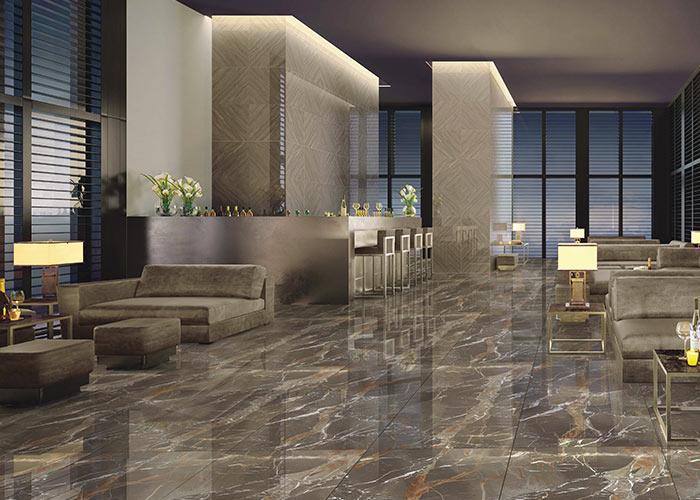
Durability
A hotel sees incredible amounts of foot traffic. And, because most hotels operate 24 hours a day, it is important that the surfaces stand up to many years of wear so that maintenance, repairs, and/or replacement is kept as minimal as possible. Every time part of the hotel is out of commission, it interrupts a hotel’s business, inconveniences guests, and can create a mess.
Ceramic tile is highly durable with resistance to scratching, scraping, denting, and staining — even after years of guests rolling heavy luggage around and strolling in and out. These durability features add up to North American ceramic tile having the lowest life cycle cost of other flooring options.
Hygiene and Safety
With so many people running in and out — guests and staff alike — hygiene and safety are top priorities.
Ceramic tile is free from allergens, fire-resistant, and offers slip-resistant options.
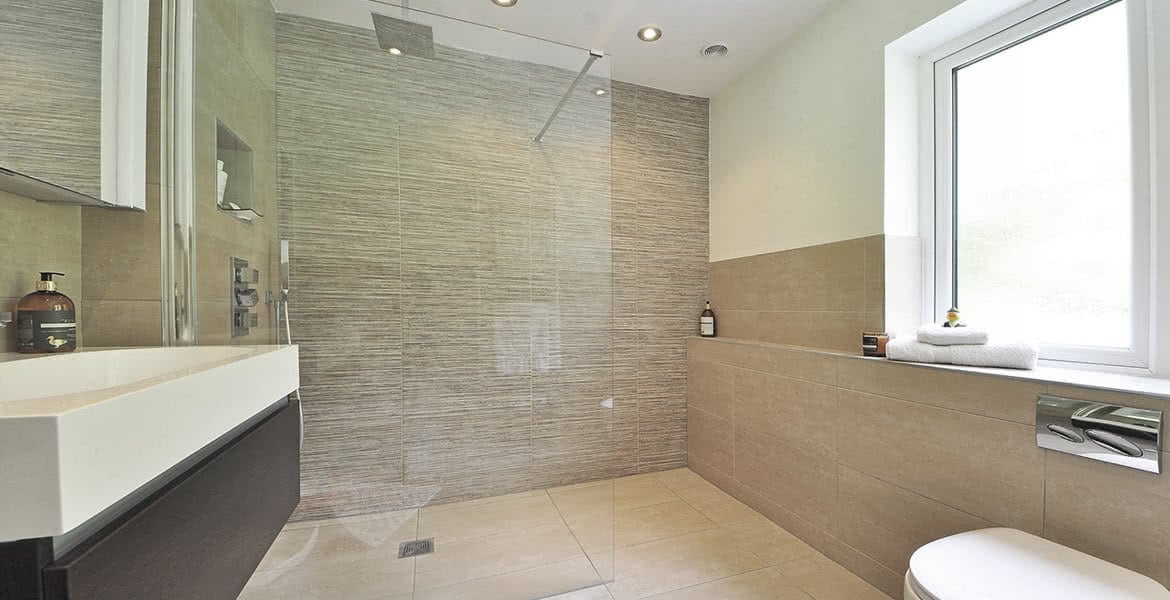
Hygiene
Concerned about surfaces that can absorb moisture and develop mold and/or harbor odors? Ceramic tile’s ability to form a waterproof installation system and its hard-baked surface that is inhospitable to mold, mildew, and other bacteria protects you from these worries.
Plus, ceramic tile’s sustainability features provide a choice that is also healthy for the environment.
Slip Resistance
Ceramic tile, through the ANSI A326.3 American National Standard Test Method for Measuring Dynamic Coefficient of Friction of Hard Surface Flooring Materials, provides manufacturers with a five-category “product use classification system” to directly communicate areas of use based on the slip resistance characteristics of their products.
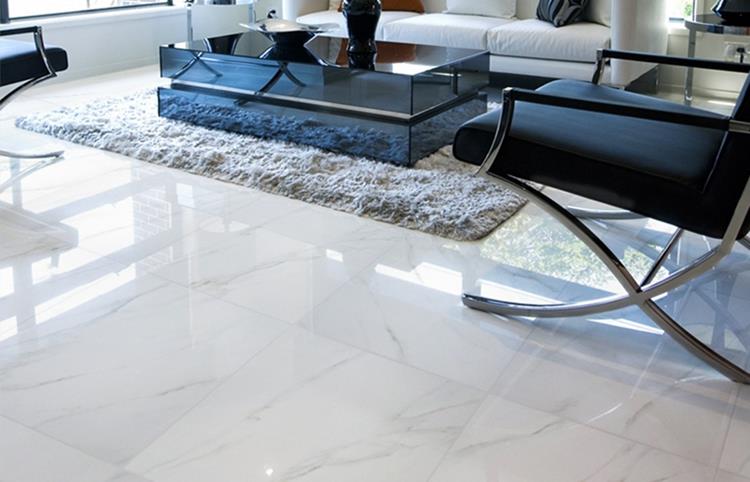
The five product use categories are:
Interior, Dry (ID)
Interior, Wet (IW)
Interior, Wet Plus (IW+)
Exterior, Wet (EW)
Oils/Greases (O/G)
This system allows designers and architects to appropriately specify ceramic tile for a particular area, such as choosing ceramic tile with a EW and O/G rating for a hotel’s outdoor pool surround that connects to outdoor dining.
Because of the multiple uses of many hotel spaces, and the often unpredictable nature of guest behavior, understanding the slip-resistant characteristics of a material is especially important for using the most appropriate product in a particular area.
Fire Resistance
Nonflammable ceramic tile will not melt like some other surface materials should there be an unfortunate accident with heat.
And, if that accident erupts into a fire, ceramic tile may help reduce the spread of flame and won’t smoke, burn, or emit toxic fumes. This safety advantage is especially important for maintaining a clear and safe exit path during a fire.
Easy Maintenance
The low maintenance and simple cleaning of ceramic tile makes it ideal for hotels responsible for maintaining dozens to hundreds of rooms, private and public, large and small.
Because ceramic tile does not harbor allergens or trap dirt and is also resistant to microbial and bacterial growth, it can be easily cleaned with sweeping and wiping or mopping with just water alone.
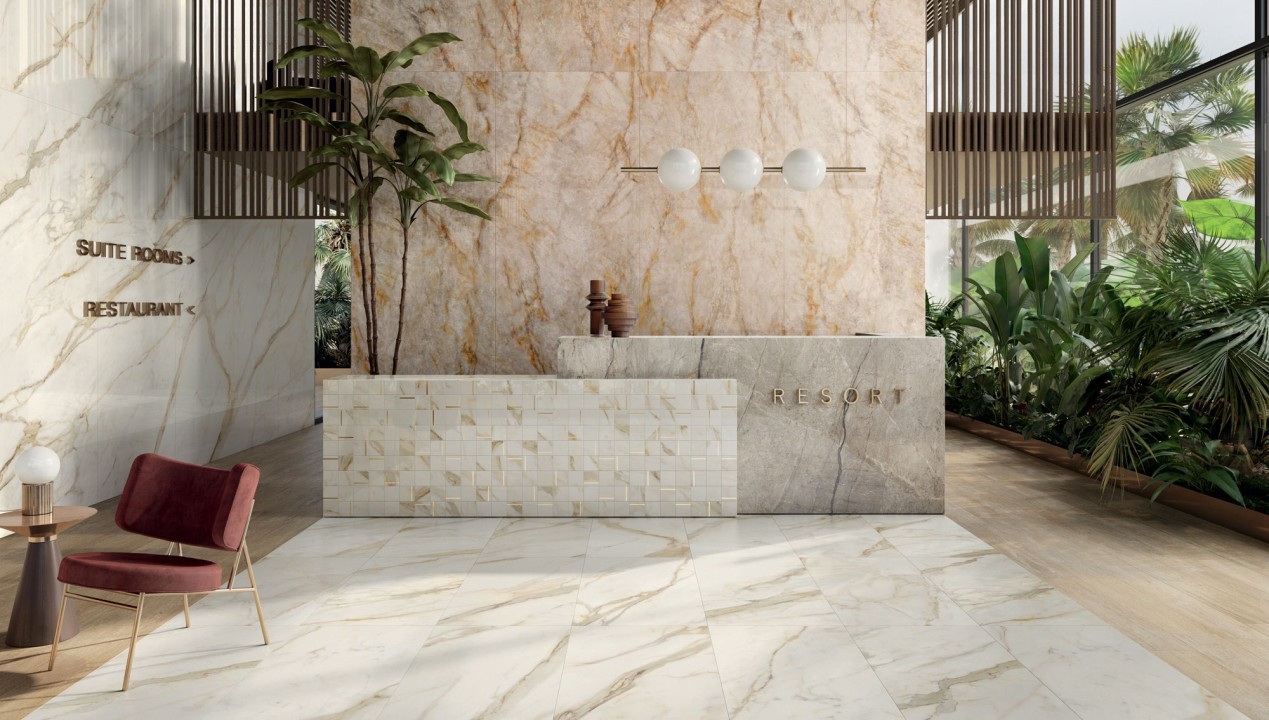
For guests that might be a little more messy, ceramic tile can be cleaned with a neutral cleanser made specifically for tile and grout. Ceramic tile’s resistance to scratches, stains, and fading means less time on the maintenance of repairs and replacement, as well.
Having beautiful, low-maintenance surfaces lessens the need for constant upkeep so that day-to-day business can continue operating smoothly.
Style
And of course, ceramic tile is tremendously versatile and can create any aesthetic with a wide range of style options.
A hotel should reflect not only quality of service and the branding of the hotel but typically reflects the hotel’s location, as well. Ceramic tile offers a broad range of colors, shapes, sizes, patterns, and even textures to create stunning designs that are customizable. Ceramic tile’s beauty gives guests a positive memorable experience.
How Hotels Can Use Tile
Just as you can use ceramic tile in any room of a home, ceramic tile can be used in any hotel area, from the lobby to the swimming pool to the restaurants to the guest rooms — for floors, walls, showers, and more.
Hotel Lobby Tiles
A guest’s first impression can make or break their stay, so naturally, hotel lobbies are a primary opportunity to create a wow-factor in a hotel’s design.
The lobby establishes ambiance, quality, and style. Guests gaze into the lobby before they even speak with front desk staff. So here, ceramic tile has a true opportunity to shine. Greet guests with gorgeous hotel lobby tiles and their visit has a positive start that can reflect in overall satisfaction and repeat business.

Ceramic hotel lobby tiles offer seemingly endless variety:
Even beyond that unparalleled first impression, a lobby likely sees the most foot traffic of all the spaces in the hotel. Ceramic tile’s durability takes it all in stride and remains dazzling.
Hotel Floor Tiles
Spaces large and small throughout the building benefit from ceramic tile flooring.
Conference rooms, gyms, ballrooms, spas, kitchens, brunch areas, courtyards, rooftop patios — you name it. Hotel tile flooring can have a uniform style throughout with coordinating tile or create unique designs for specific areas. Using one type of flooring material simplifies cleaning for staff, as well.
High-traffic spaces will naturally benefit from ceramic tile and less-traveled spots can be fantastic opportunities for ceramic tile designs to add design interest.
Hotel Room Tiles
Hotel room floor tiles may be a hotel’s best investment. The gorgeous options plus easy maintenance for quick turnovers adds up to good business sense (cents).
And of course, tiles for hotel rooms allow you to craft spaces worthy of Instagram hashtags and Google Maps pins that earn you more guests. Hotel room floor tiles can reflect the hotel’s or locale’s unique style that leave guests with mesmerizing memories.
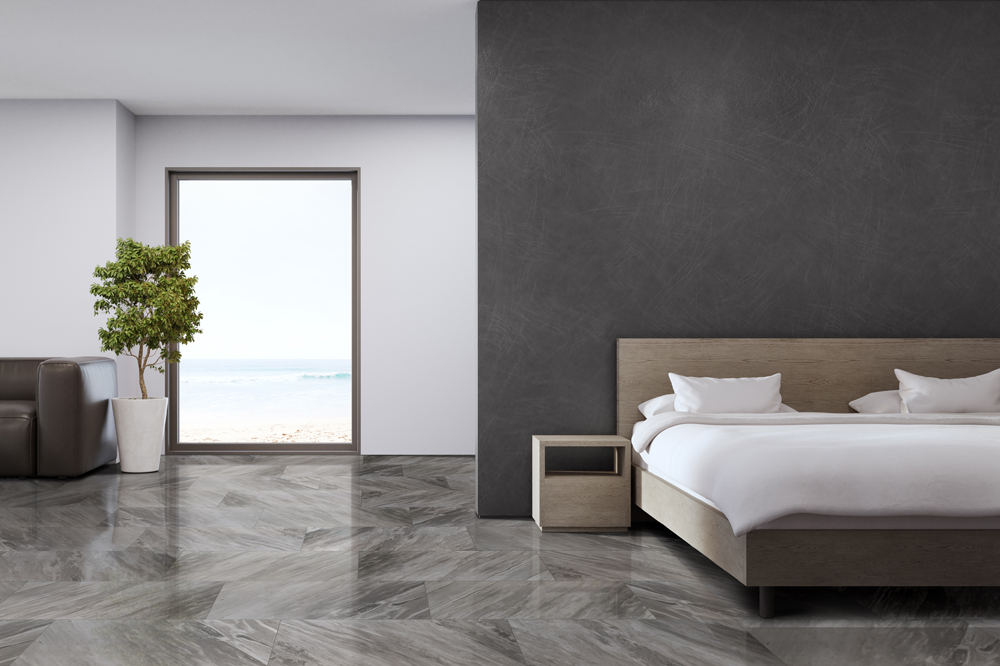
Hotel Bathroom Tiles
A typical hotel bathroom is small and efficiently designed to provide everything a guest could need. Ceramic tile allows hotel bathroom design to extend from the floors to the walls, countertop, shower, and ceiling in designs that are anything but typical.
Available in a broad range of styles, ceramic tile also has options appropriate for areas exposed to moisture and can be selected for the slip resistance appropriate for areas that can become wet. No other surface material has this industry standard that defines appropriate areas of use.
We can’t stress enough that ceramic tile is mold- and bacteria-resistant — particularly important for areas that are used constantly and must be kept hygienic for the health of each guest. Ceramic tile makes cleanup easy for staff, which showcases quality and builds guests’ confidence in your commitment to cleanliness.
Hotel Exterior Tiles
A hotel design isn’t complete without attention to the exterior spaces. Incorporating ceramic tile into a hotel’s exterior fits perfectly with outdoor areas such as swimming pools and patios, as well as hotel facades.
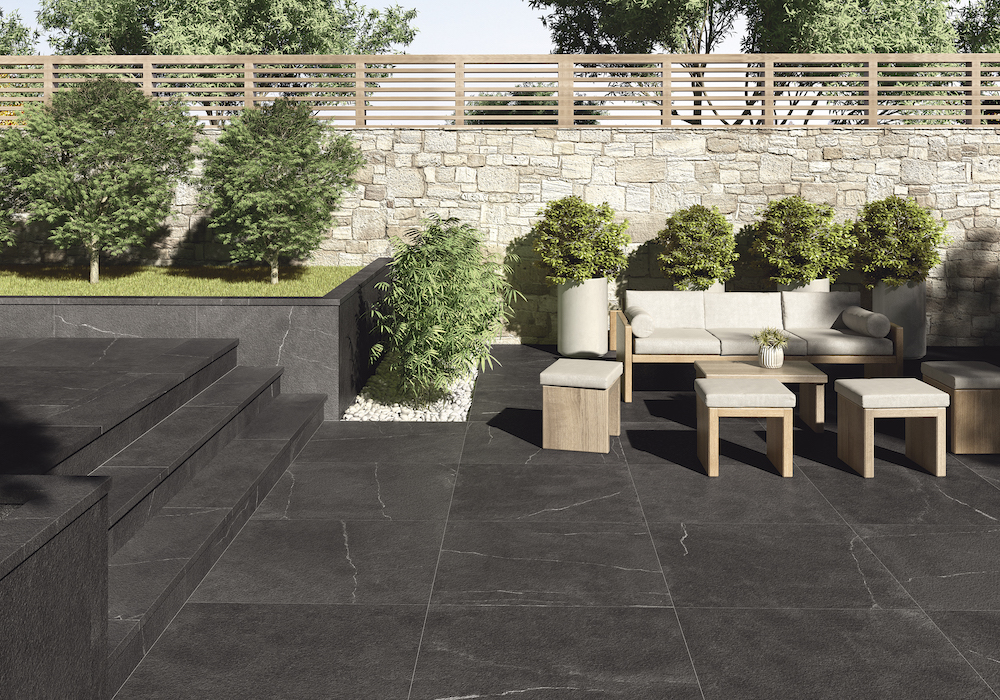
Hotel Gym and Spa Tile
Five Tips for Choosing a Hotel Tile Design
۱. Work With Your Surroundings
Hotel guests visit a city because it has something to offer them, including its own unique aesthetic and vibe.
Work with this vibe and give guests more of what they expected.
For example:
Biophilic designs may complement hotels in wooded and other natural areas.
Bright colors and patterns will add a fresh and sunny feel for beachside hotels.
White subway tile, concrete-look tile, and plaster-looks evoke an urban aesthetic.
Terracotta-look tile will feel right at home in Mediterranean-inspired areas.
These ideas are just the tip of the iceberg in terms of ceramic tile options. Take cues from the environment and guests will feel energized by and appreciative of their surroundings.

۲. Coordinate Hotel Tile With Your Space’s Other Elements
Because of the functionality and design versatility of ceramic tile, it can be chosen to work perfectly with other elements in your space.
For example, a statement sculpture, piece of artwork, or architectural detail can work hand-in-hand with ceramic tile selections to highlight and/or frame special features.
Coordinating ceramic tile with a hotel’s other design elements can also be functional. For example, if cleaning ease and durability issues omit features such as headboards from your hotel room design, ceramic tile can be used to create the look of a headboard — without any of the hygiene concerns.
۳. Ceramic Hotel Tile Designs Can Help Delineate Spaces
Open-concept floor plans are popular in both homes and businesses to provide a sense of grandeur and space. Nevertheless, it can be helpful to delineate different areas of open-concept spaces — especially in hotels, where a single space can have numerous functions.
For example, a lobby may have an area for people to check in, a dining area, a working zone, and a bank of elevators. You can use different tile colors, patterns and even textures to divide these areas from one another, creating distinct functional zones while still maintaining a cohesive overall design.
۴. Create Bespoke Hotel Tile Designs
You want your guests to have a unique experience. So why not create a one-of-a-kind hotel tile design?
Thanks to advances in tile manufacturing, ceramic tile can be printed with custom designs. Consider designing tile with bespoke artwork to display in the lobby or the guest rooms, or perhaps print the hotel’s branding directly onto hotel tiles.
۵. Don’t Be Afraid to Go Big
Use ceramic tile to create a unique experience, knowing it will also stand the test of time and stand up to any and all guest traffic.
Creative patterns: With all the colors, shapes, sizes, and textures available with ceramic tile, you can create a one-of-a-kind installation in hotel tile as a distinctive, memorable centerpiece.
Gauged porcelain tile panels/slabs: This is the actual definition of “going big.” Gauged porcelain tile panels/slabs are massive tiles that reach up to 10 by 15 feet. Their extra surface space creates a canvas for impressive patterns and natural looks.

Natural stone and gemstone looks: Imagine an entire lobby decked in marble or a rare gemstone. With ceramic tile, the look of any natural stone — without the sustainability issues or high costs associated with sourcing them — is possible.
Three-dimensional surfaces: Three-dimensional tile can create everything from contemporary looks to intricate mosaics to tile that reflect the artisanal craftsmanship of handmade tiles.
Create a Home Away From Home for Your Guests With Ceramic Hotel Tile
Whether breaking ground on a new hotel or reinvigorating existing spaces, ceramic hotel tile is your go-to selection for long-lasting value, top-notch quality, and seemingly endless options that help guests feel comfortable and at home — away from home.
For more ideas, you can check out the CP website.
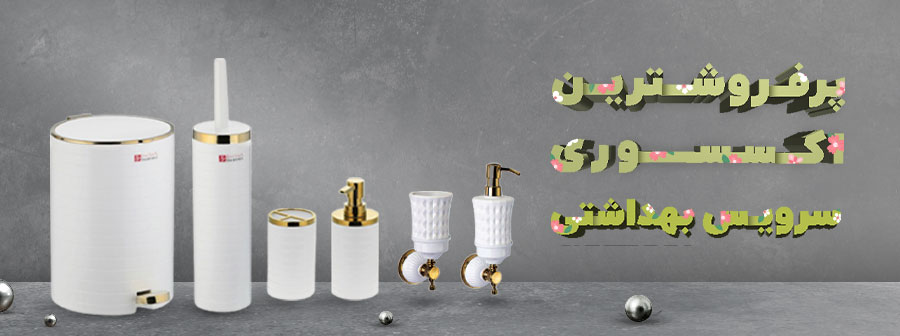
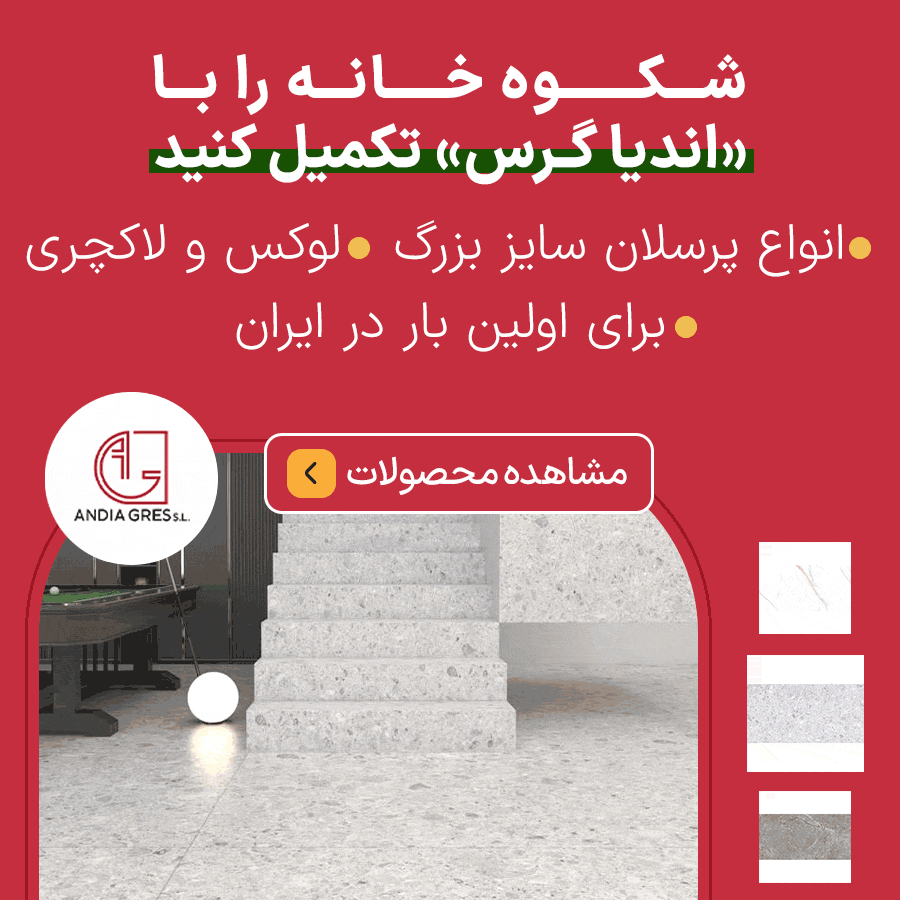
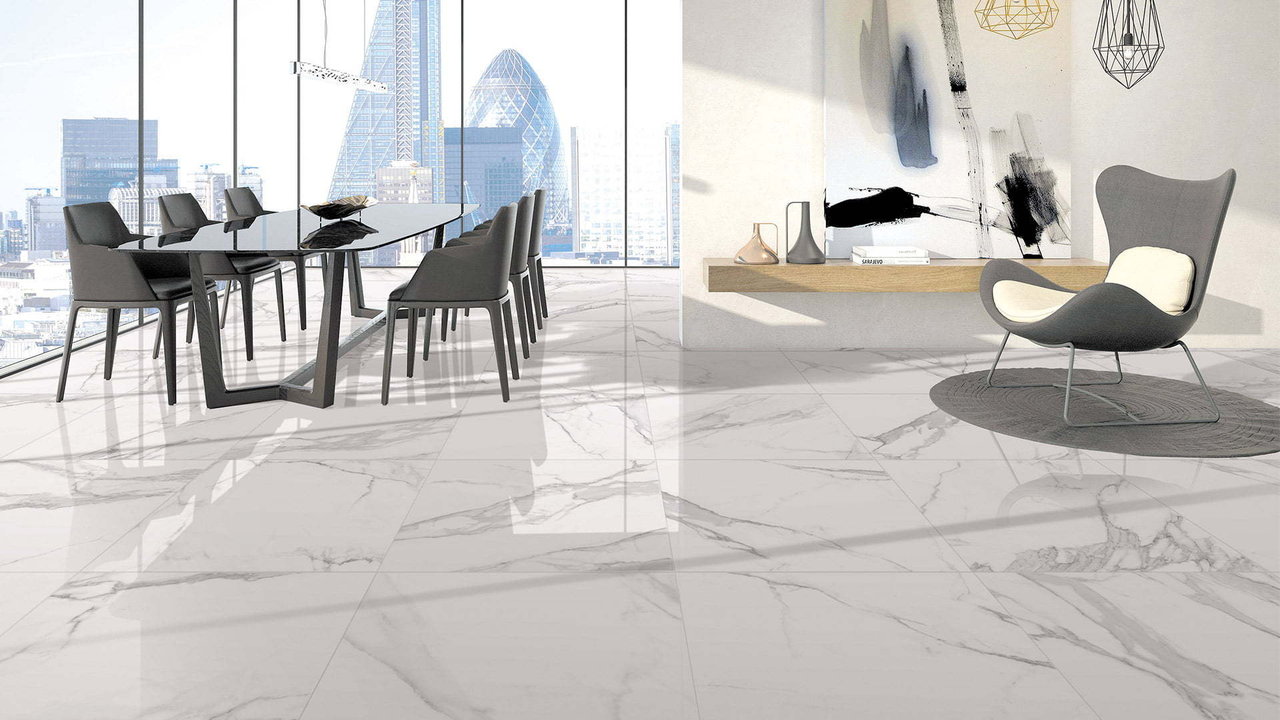
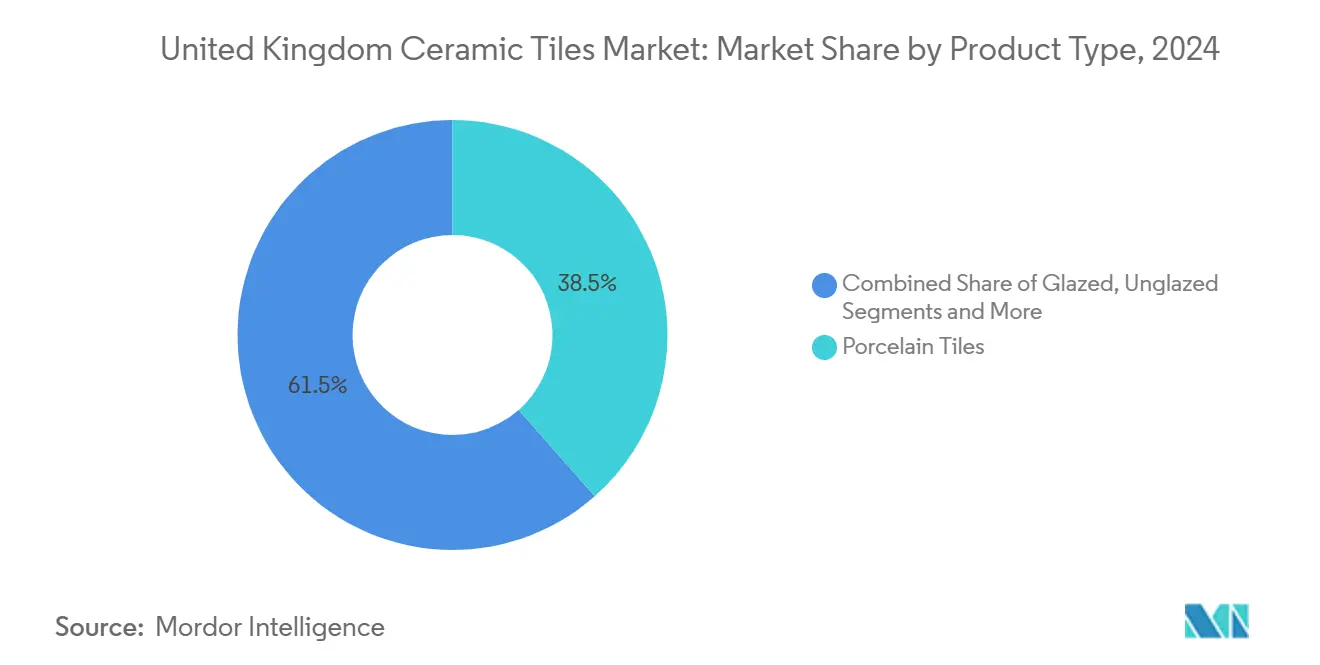
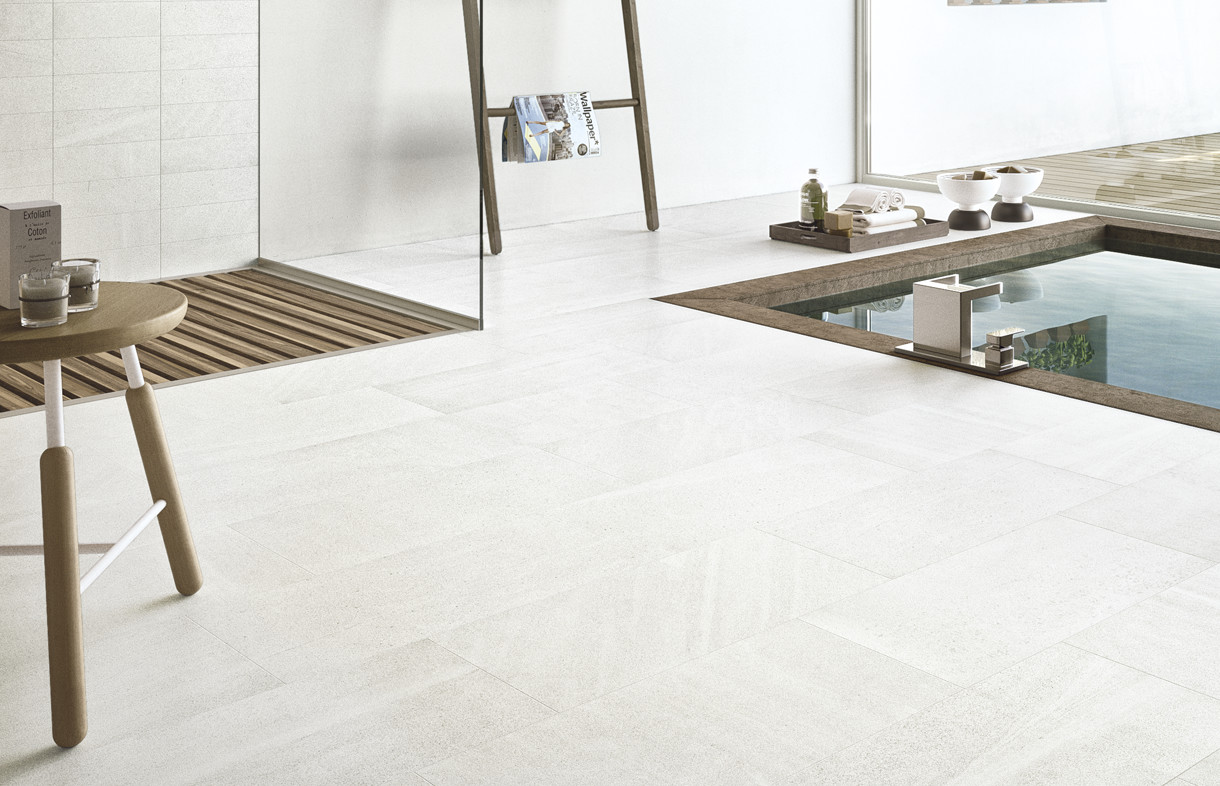

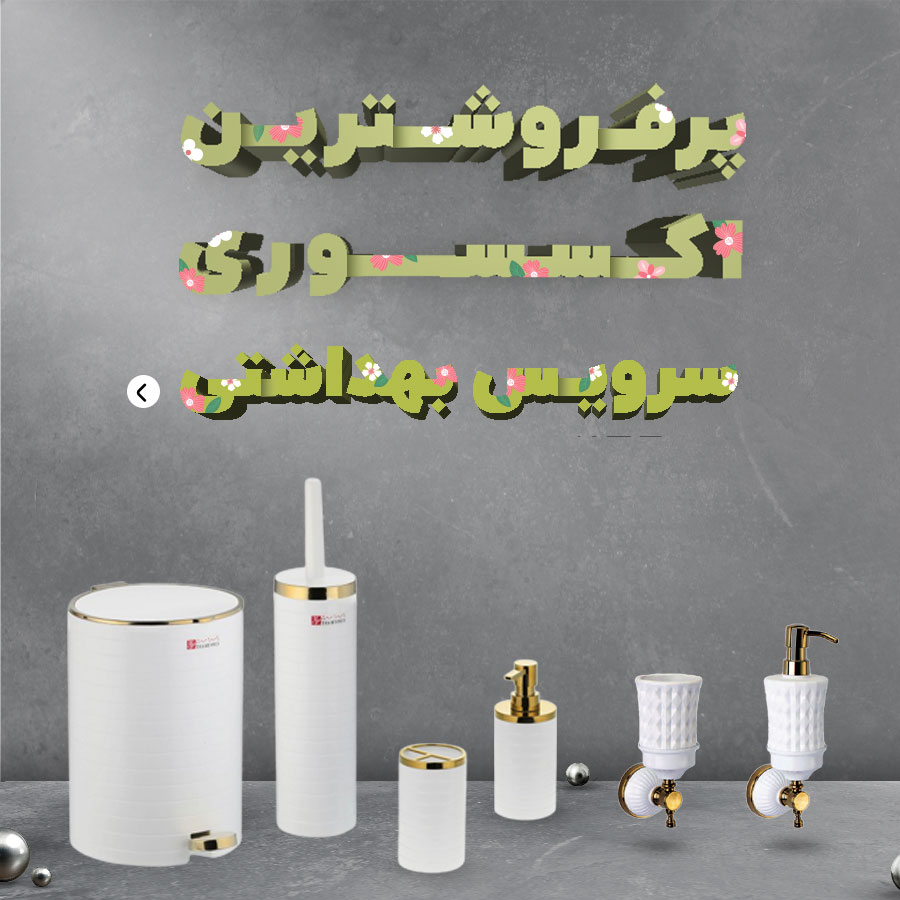

نظرات ۰